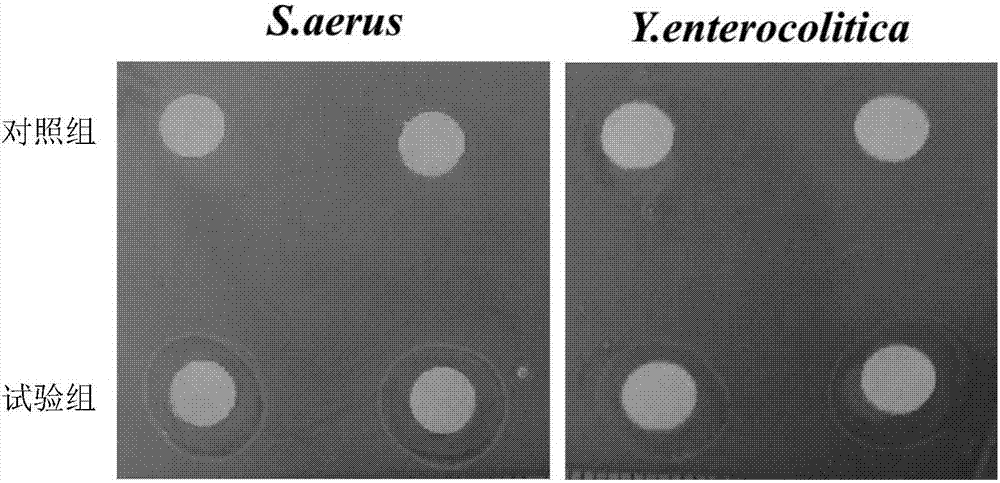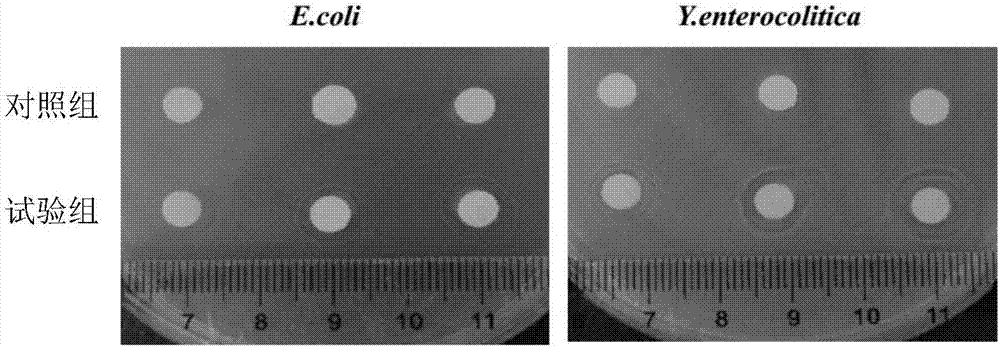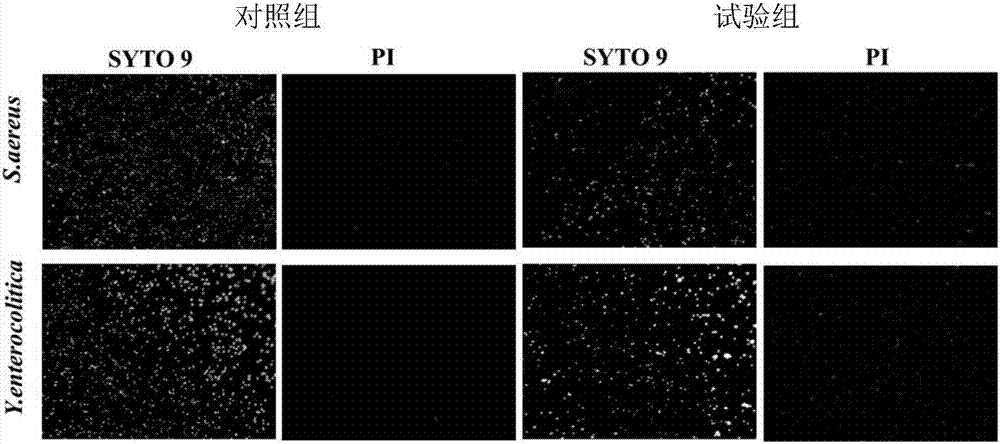Separated endogenous antimicrobial polypeptides and application thereof
An antibacterial polypeptide and endogenous technology, applied in the field of bioengineering, can solve the problems of difficult treatment of infectious diseases and reduced effectiveness of antibiotics, and achieve excellent antibacterial effect
- Summary
- Abstract
- Description
- Claims
- Application Information
AI Technical Summary
Problems solved by technology
Method used
Image
Examples
Embodiment 1
[0030] Entrust Shanghai Keyept Biotechnology Co., Ltd. to synthesize the following sequence by solid phase method:
[0031] SEQ ID NO.5 VTQPLAPVHNPISV
[0032] SEQ ID NO.6 YPVTQPLAPVHNPIS
[0033] SEQ ID NO.7 VTQPLAPVHNPIS
[0034] SEQ ID NO.8 YPVTQPLAPVHNPISV
[0035] The main biological parameters for obtaining the aforementioned polypeptide sequences through online tools are as follows:
[0036] SEQ ID NO.5
[0037] The isoelectric point (pI) is 6.71, the molecular mass (Mw) is 1471.72Da, and has 14 amino acids. The lower relative molecular mass indicates that the antibacterial polypeptide is not easily hydrolyzed by proteases. The instability coefficient is 53.96, indicating that the antibacterial polypeptide is relatively stable and not easily degraded and destroyed by gastric acid. The fat solubility index and hydrophilicity are 125 and 0.443 respectively, showing hydrophobicity.
[0038] SEQ ID NO.6
[0039] The isoelectric point (pI) is 6.74, the molecular m...
Embodiment 2
[0053] The polypeptides described in Example 1 can be used alone, in addition, these polypeptides can also be used in combination of polypeptide compositions. The polypeptide composition contains at least two polypeptides whose sequences are SEQ ID NO.5 to SEQ ID NO.8, preferably at least two polypeptides whose sequences are SEQ ID NO.5 and SEQ ID NO.6.
Embodiment 3
[0055] This embodiment provides a polypeptide described in the foregoing Example 1, or the polypeptide composition described in Example 2 can be prepared into a pharmaceutically acceptable carrier, such as: capsules, tablets, lozenges, pills, dropping pills, In the form of suppositories, sprays, creams, patches, etc.
[0056] Test example 1 antibacterial test
[0057] Synthesis and dilution of antibacterial peptides
[0058] The antibacterial polypeptides β-Casein 213 and β-Casein 211 polypeptides obtained by solid-phase synthesis in Example 1 of this experiment were taken as examples. Take 1 mg of polypeptide, dilute it with sterile double distilled water to 1 mg / ml and store it at -20°C for later use.
[0059] Strains and Culture
[0060] Escherichia coli (E.coli, ATCC25922), Staphylococcus aureus (S.aureus, ATCC25923) and Yersinia enterocolitica (Y.enterocolitica, ACTT23715) were obtained from the American TypeCulture Collection (ATCC) . Inoculate 30 ul of bacteria...
PUM
 Login to View More
Login to View More Abstract
Description
Claims
Application Information
 Login to View More
Login to View More - R&D
- Intellectual Property
- Life Sciences
- Materials
- Tech Scout
- Unparalleled Data Quality
- Higher Quality Content
- 60% Fewer Hallucinations
Browse by: Latest US Patents, China's latest patents, Technical Efficacy Thesaurus, Application Domain, Technology Topic, Popular Technical Reports.
© 2025 PatSnap. All rights reserved.Legal|Privacy policy|Modern Slavery Act Transparency Statement|Sitemap|About US| Contact US: help@patsnap.com



